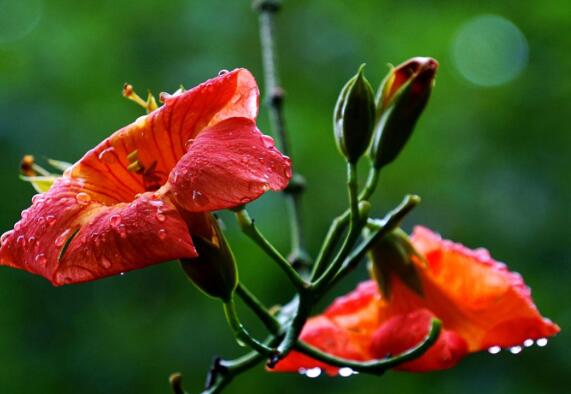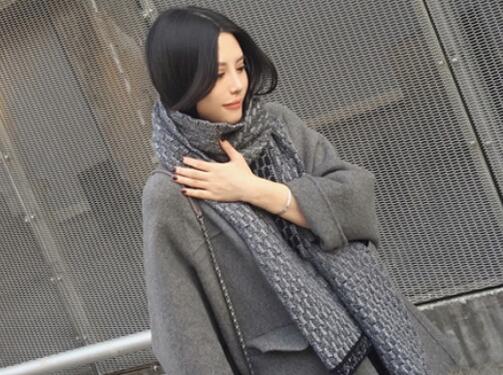豫园英文导游词有翻译

急需关于豫园的导游词说(英语版,大约能讲四五分钟或更多)
Yuyuan Garden is located in the center of Shanghai’s Old City, not far from the Bund. With a total area of less than 5 acres, it has more than 40 attractions in the inner and outer gardens, both built in the Ming Dynasty classical style. The garden is believed to be built in the Ming Dynasty more than 400 years ago. Built in traditional Chinese style with numerous rock and tree garden areas, ponds, dragon-lined walls and numerous doorways and zigzagging bridges separating the various garden areas and pavilions.The garden covers a significant space and include a few halls, springs and other buildings of interest and cultural relics including century-old furniture, calligraphy and paintings of famous artistists,clay sculptures and brick carvings, some inscriptions and couplets. One of the highlights in the garden is the Exquisite Jade Rock. It is a 5-ton porous, beautifully shaped grotesque rock which is said to be carried from Tia lake in Wuxi, Jiangsu province. The rock is characterized by its wrinkled appearance, slender shape, translucent nature and numerous holes eroded by water. An interesting legend goes that the rock was found some 1000 years ago and it was originally one of the Emperor Huizong’s private collections before it found its way in the Yuyuan Garden. The exquisite layout, beautiful scenery, and the artistic style of the garden architecture have made the garden one of the highlights in Shanghai. The surrounding bazaar area provides good shopping opportunity, where traditional Chinese products and gold and jewels are available on sale.
豫园导游词中的海上名园是什么意思
Yuyuan Garden Yuyuan Garden is a famous classical garden located in Anren Jie, Shanghai. The garden was finished in 1577 by a government officer of the Ming Dynasty (1368-1644) named Pan Yunduan. Yu in Chinese means pleasing and satisfying, and this garden was specially built for Pan's parents as a place for them to enjoy a tranquil and happy time in their old age.In the 400 years of its existence, Yuyuan Garden had undergone many changes. During the late Ming Dynasty, it became very dilapidated with the decline of Pan's family. In 1760, some rich merchants bought Yuyuan Garden and spent more than 20 years reconstructing the buildings. During the Opium War of the 19th century, Yuyuan Garden was severely damaged. The Yuyuan Garden you see today is the result of a five year restoration project which began in 1956. The garden was open to the public in September, 1961.Yuyuan Garden occupies an area of 20,000 square meters (about five acres). However, the small size is not a representative of the attractions of the garden. The pavilions, halls, rockeries, ponds and cloisters all have unique characteristics. There are six main scenic areas in the garden: Sansui Hall, Wanhua Chamber, Dianchun Hall, Huijing Hall, Yuhua Hall and the Inner Garden. Each area features several scenic spots within its borders.Upon entering the garden, you will encounter a rockery, which is called the Great Rockery. With a height of 14 meters (about 50 feet), it is the largest as well as the oldest rockery in the southern region of the Yangtze River. On the top of the rockery, you can get a bird's eye view of the garden. Cuixiu Hall sits at the foot of the rockery. It is a quiet and elegant place surrounded by old trees and beautiful flowers. Visitors will find curio shops in the Cuixiu Hall.Sansui Hall was built in 1760 and was originally used to entertain guests. Later it became a place to hold ceremonies for the gentlemen and bookmen. With a height of nine meters (about 30 feet) and featuring five halls, it is the largest and most commodious structure in the garden. The name Sansui is derived from the book History of the later Han Dynasty, and means 'propitious' and 'lucky'.Wandering in the area of Yule Pavilion and Wanhua Chamber, you will find pavilions, corridors, streams, courtyards as well as many other natural features. Wanhua Chamber is a delicately chased building surrounded by derious cloisters. Spring bamboos grow beside the cloisters. In front of Wanhua Chamber, there are two old trees. One is a maidenhair tree which is 21 meters tall (about 70 feet).It is said that the tree was planted by the host of the garden 400 years ago.The Dianchun Hall area is located east of Wanhua Chamber, and includes Hexu Hall, Relic Hall, Ancient Well Pavilion, and the Acting-and-Sing Stage. Dianchun Hall was once the headquarters of Xiaodao Hui, a revolted group who fought against the government of the Qing Dynasty (1644-1911) during 1853-1855. The coins made by Xiaodao Hui and the bulletins they proclaimed are currently displayed in the hall.The true treasure of Yuyuan Garden is the Exquisite Jade Rock. Located across from Yuhua Hall, it is one of the three famous rocks in the southern region of the Yangtze River. (The other two are Duanyun Feng in Suzhou and Zhouyun Feng in Hangzhou.) The rock is 3.3 meters (about 10.8 feet) in height and has 72 holes. What is interesting about this rock is that if you burn a joss stick just below the rock, the smoke will magically float out from all of the holes. Similarly, when you pour water into the rock from top, the water will flow out from each hole creating a spectacular sight to see. Pan Yunduan was very fond of the Exquisite Jade Rock, and he built Yuhua Hall facing the rock so it was convenient to sit in the hall and admire it. The furnishings in the hall were made of top grade rosewood of the Ming Dynasty, appearing both natural and graceful.The Inner Garden was a separate garden built in 1709, but is now a part of Yuyuan Garden in the south. The Inner Garden is compact and exquisite, and the rocks, pavilions, ornamental ponds and flower walls offer some of the most attractive sceneries in Yuyuan Garden.
城隍庙的导游词
hi尊敬的旅客 现在由我带领你们参观这历史悠久的豫园上海城隍庙坐落于上海市最为繁华的城隍庙旅游区,是上海地区重要的道教宫观,始建于明代永乐年间(1403-1424),距今已有近六百年的历史海的城隍庙始建于明代永乐年间(1403年后),庙内祭奉城隍神秦裕伯(明太祖敕封秦裕伯为上海县城城隍神)和霍光(汉大将军博陆侯)。
清代时香火极其鼎盛,上海的男女老幼,人人皆知城隍庙,上海开埠后城隍庙及其周围地区商贾云集,市场繁荣,到城隍庙可以购买许多生活必需品,特别是一些日用小商品。
上海市政府从1991年起,开始把城隍庙市场改建为具有民族传统的现代化大型旅游购物中心----豫园商城。
商城内道路较窄,建筑多建造于1911年以前(即清代末年),具有浓郁的中国古建筑的风格和特点,整个商城内小商店鳞次栉比,商品琳琅满目,各具特色,顾客熙熙攘攘,保持着中国古老的城镇街市风貌,大凡来上海的中外游客,大都要到老城隍庙走走。
在老城隍庙内,汇集了众多的上海地方小吃,绿波廊的特色点心,松月楼的素菜包,桂花厅的鸽蛋圆子,松云楼的八宝饭,还有南翔小笼和酒酿圆子,真可称得上是小吃王国了。
上海城隍庙历史悠久,是上海道教正一派主要道观之一。
老城隍庙里供奉着3个菩萨,即护城神秦裕伯、霍光、陈化成。
关于他们的传说不一,版本很多。
就说那秦裕伯,一种说法是元末明初,这位被称为“智谋之士”的上海人,为逃避乱世,辞官回到了当时还是个小县城的上海。
明朝开国后,朱元璋多次请他出山,才应允入朝。
秦裕伯是前朝老臣,又精于世道,很受皇帝重用。
朱元璋在他死后封他为上海“城隍之神”。
还有个版本是,秦裕伯是元末明初河北大名人,曾在上海住过。
传说他是一个孝子,因其母感叹未见过金銮殿,故专门建了一座像金銮殿的建筑。
后被人告密,皇帝派员来查,他就连夜将殿改成金山神庙,躲过了一场灾祸。
清军南下时,原准备屠城。
行动前夜,清军将领梦见了秦裕伯,秦警告他不准杀人,这才没敢下手。
因秦裕伯“显灵”,救了上海百姓,故被列为城隍爷。
霍光是东汉时期镇守疆土的将军。
永乐年间,上海县正式建城隍庙的时候,知县将位于城中心的霍光行祠迁此。
使上海人真正顶礼膜拜的是第三位城隍爷陈化成。
1937年抗日战争爆发后,市民从“陈公祠”中请出了1842年第二次鸦片战争中在吴淞炮台战死的江南提督陈化成的神像,供奉在大殿后进,表达了上海人民的抗战决心。
城隍在道教中的意思是指城市的保护神,可见老城隍庙在上海的地位和影响。
至于那城隍庙隔壁的豫园,据说是永乐年间一个在四川任布政使发了迹的上海人潘允瑞为愉悦老亲修造的一个花园。
乾隆年间,豫园卖给了城隍庙,改为它的“西园”,园中重建的湖心亭和九曲桥都很有雅趣。
这个熙熙攘攘了几百年的花园,如今的热闹喧嚣还是没有一丝减弱。
在豫园对面,一排餐饮店延伸了数十米,都是各式的美食店。
老字号“南翔馒头店”卖的小笼包远近闻名,中午饭时间还没到,等着吃小笼包的人就排成了队。
再向左拐是一条特色街,平排的两层木制红楼,店门上沿是一色的曲直镂雕连檐,再上面是镂雕的窗棂,顶上是翘角的飞檐。
街心还有个连廊,就像架起的第二道门。
街道很窄,3米多宽,两旁挂着悬空的“光明居饰”、“景龙轩”、“木梳大王”、“扇”、“茶”等招牌,一路望去,非常醒目。
这城隍庙老街虽然不似现代店铺空调宜人、玻璃映照,但其涂满红漆的木雕门面、种类俱全的小巧制作和青石板砖的粗纹路面,却很有一些《清明上河图》里那特有的乡土气息,让人感到亲切。
寻找上海城隍庙和豫园的导游词,需要特别详细的,加急哦
大家帮帮忙哦
城隍庙上海立县之前,在镇西约 6 里处的淡井里,有一座华亭城隍行殿,俗称淡井庙。
建县后经过一百五十余年,明永乐年间 (1403—1424) 才将方洪北岸原金山神庙加以扩充,改为上海县城隍庙。
相传,城隍是道家保护城池的神,同时也庇佑着市民,城隍庙是地方神的祭祀之地,城隍神则多为生前有惠于民的清官良吏,以期其殁后也能为民“御大灾、捍大患”。
上海城隍庙其前身原为金山神主、西汉大司马霍光神祠,故今庙内前殿仍由霍光坐镇,后殿供奉上海城隍神秦裕伯,民间俗称“一庙二城隍”,国内罕见。
沉香阁位于城隍庙西北面的沉香阁,原由豫园主人潘允端所建。
潘允端于明万历二十八年(1600 年)督办漕运疏浚淮河打捞沉船时觅得一尊精美观音佛像,甚为喜欢,又于当夜梦见其母嘱托,即派人护送佛像回上海建阁供奉。
因佛像由名贵海琼水沉香木雕制,芳香十分浓郁,故名“沉香阁”(据考,该佛像系隋代大业年间南洋赤土国回赠隋炀帝之礼,在淮河中遇风浪沉没,已卧伏河底近千年)。
明代之后,沉香阁迁址重建,曾改名为“慈云禅寺”,拥有丛林寺院规模,与龙华、静安、玉佛三大名刹齐名今沉香观音虽非原像,但仍形神兼具、仪态万方,为佛中珍品,香火终日兴盛。
阁内现还开设尼众班,已成为全国最大的比丘尼寺院之一。
豫园花园明代豫园为沪上重要的传统旅游胜地,享有“奇秀甲于东南”之誉。
该园由明代进士、曾任四川布政史的上海籍人士潘允端于 1559年(明嘉靖 38年)始建,有“愉悦双亲”之意。
初占地 70余亩,曾盛极一时,后几经战乱,现尚存 30余亩。
园中布局精致、景色宜人。
亭台楼阁参差错落,曲经回廊交相掩映,池水萦绕与假山怀抱,名贵花木与奇石争辉,尽显“江南名园”之风范,并留有清代上海著名“小刀会”起义的遗址。
大假山是豫园景色的精华所在,也是江南园林中黄石假山的典范之作,由明代最具权威的叠山名家张南阳精心设计,并亲自参与建造,用数千吨浙江武康的黄石堆砌而成。
玉华堂前的“玉玲珑”是江南三大名石之一,也是豫园中的瑰宝。
古人品评石之高下,有“皱、漏、透、瘦”四个标准,玉玲珑则四者俱佳,而以“透、漏”论之,更是冠盖全国,称誉海内外。
豫园中有许多砖雕、泥塑、不仅历史悠久,而且十分精美。
豫园中的名树古木也为数众多,百年以上的古树就有三十余棵。
园中最古老的树是万花楼前的银杏树,高寿已四百余年。
当代大诗人郭沫若一九六一年参观豫园时,写下了“玲珑玉垒千钧重,曲折楼台万姓游。
坐使湖山增彩色,豫园有史足千秋”的诗句。
湖心亭、九曲桥典雅、别致的九曲桥,与湖心亭相依相伴成为上海的标志之一。
人们行走在桥上弯来拐去、斗折蛇行、移步换景。
而曲桥为什么以“九”为数呢
按中国人民的传统习俗,九是阳数最高的数,具有吉利之意,故取名“九曲桥”,实有取其吉祥如意之意。
民间更是流传着“儿童走九曲,幸运久久久;学子走九曲、考分九十九;情侣走九曲,天长而地久;老翁走九曲,活到九十九”的民谣
高分悬赏求一份《上海豫园游览区》的详细景点游览导游词
很急
大家好,欢迎大家来上海旅游我是你们的导游XX。
希望这是一次愉快、轻松的旅途。
现在我们来到的是豫园,豫园坐落于位于上海市中心的黄浦区,是明朝时期的私人花园,建于1559年,充分展现了中国古典园林的建筑与设计风格。
如今,它已经成为到上海观光的国内外游客常去的游览胜地。
园内有1853年小刀会起义的指挥所点春堂。
豫园于1961年开始对公众开放,1982年被国务院列为全国重点文物保护单位。
园内有江南三大名石之称的玉玲珑。
园侧亦有城隍庙及商店街等游客景点,附近有多家著名食店,包括以小笼包著名的南翔馒头店、绿波廊及上海老饭店。
豫园 是上海市区内惟一的明式园林,是江南五大园林之首,兼有芥子纳须弥、小中见大的明清古典园林风格,它以虚实相映、大小对比、高下对称、疏密有致等建筑手法而著称,为全国重点文物保护单位,也是国家级4a景点。
豫园是明代时任四川布政使上海人潘允端建造的,潘允端为了让父亲潘恩安享晚年,于明嘉靖三十八年在上海老城厢建园,历时28年,始成豫园,距今已有400多年的历史。
豫,在古汉语中有平安、安泰之意,取名豫园,有愉悦老亲的意思。
散布于豫园的许多砖雕、石雕、泥塑、木刻,不仅历史悠久,而且十分精致。
《神仙图》、《八仙过海》、《广寒宫》、《郭子仪上寿图》、《梅妻鹤子》、《上京赶考》、《连中三元》等极具文物价值和观赏价值101贝考导游证考试。
豫园作为中国传统文化的载体,从建园时即和书画结缘。
明代著名书画家王稚登、董其昌、王世贞、莫是龙等就曾在豫园赋诗题额、挥毫作画。
宣统元年(公元1909年),高邕、杨逸、钱慧安、吴昌硕、王一亭等在得月楼发起组织的“豫园书画善会”成了海上画派的滥觞。
经过多年积累,豫园现珍藏书画、家具、陶瓷等珍贵文物数千件。
1999年在豫园建园440周年之际,江泽民同志欣然应邀为这座江南名胜题词“海上名园”。
用黄山石勒刻的题词石矗立于豫园大门内,成为豫园一道最为亮丽的风景线。
园成为城隍庙西园以后,一直免费开放,东园于每月朔望之日也对外开放。
豫园是城内游览和举办各种活动的主要场所。
豫园举办各类花展历史悠久,还有重阳节登高望远活动、元宵节灯会等游艺活动,平时常举办奇石、书画展和茶道活动等。
这些传统民间活动在日军占领上海后基本上停办。
1979年以后,花展、灯会、书画展等活动相继恢复。





